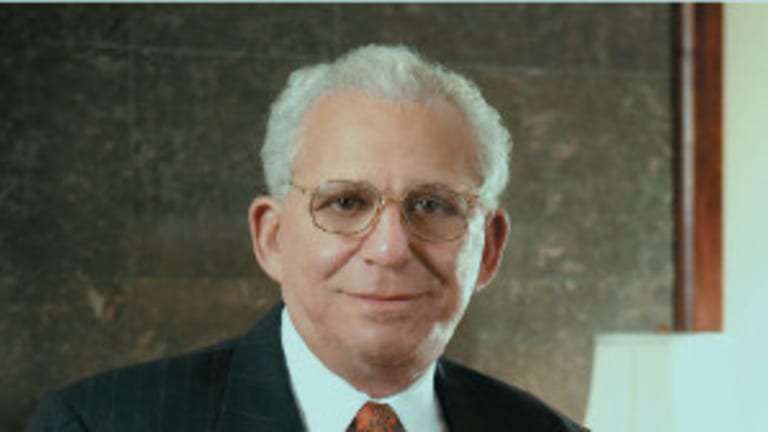Through a challenging, disciplined environment, a revolutionary Virginia school uses tennis to help motivate students to excel in academic achievement, to respect themselves and adult leaders, and to learn core human values.
Those who play tennis know that the sport reflects such character traits as self-reliance, resilience, and the ability to problem-solve. We tend to think of the pastime merely as a metaphor, an athletic pursuit that tests those qualities in a decidedly no-stakes way. At two An Achievable Dream schools in Newport News, VA, however, the tennis–life connection could not be more serious or consequential. The schools, which grew out of an educational tennis program and camp, look to tennis, their official sport, to teach, according to the organization, “discipline, perseverance, confidence, sportsmanship and teamwork.”
An Achievable Dream was founded by Newport News businessman Walter Segaloff , who died suddenly of a heart attack in August, leaving behind a legacy that spans two decades and hundreds of student success stories. The organization operates two schools in a private–public partnership with Newport News Public Schools: An Achievable Dream Academy (kindergarten through 5th Grade) and An Achievable Dream Middle and High School (6th through 12th Grade). Lee Vreeland, chief academic officer of An Achievable Dream, recalls the story of how Segaloff was first inspired to start An Achievable Dream. An Ohio native who had moved with his family to Newport News as a teenager and graduated Newport News High School, Segaloff attended the University of Michigan before returning to Virginia and the family business, which he expanded into a 107-store chain called Virginia Specialty Stores.
As president of the company, Segaloff noticed a disturbing trend: Young men and women who were applying for the full range of jobs, from custodial to executive, lacked the basic social and professional skills required for serious consideration.
“Walter saw people coming in constantly, who maybe had even graduated high school or college, but who were unemployable,” Vreeland says. What happened next is a well known story in Newport News: In 1992, the same year he sold the business, Segaloff gathered area business leaders, many of whom recognized the same problem. He put together a tennis and tutoring program for 95 students that, in time, grew into a full-fledged educational facility with a K–12 program spread over two schools. A third school, An Achievable Dream Academy, in partnership with Virginia Beach City Public Schools, is planned for July 2014; it will begin offering K–2nd Grade, with an additional grade added each year.
Statistics tell the story of where An Achievable Dream students come from and what they’re up against: 78 percent hail from single-parent homes; 98 percent are African-American; and 100 percent qualify for free or reduced-price lunch upon entry. The triumph of An Achievable Dream is plain in the stats on the other side of the equation: The schools have a 100 percent graduation rate; An Achievable Dream students have been offered more than $2 million in scholarships over the years.
Though academics are the priority, tennis continues to occupy an essential place in life at An Achievable Dream. Dreamers, as the students are called, who play on the high school tennis team rank high in their district and region, and many earn college scholarships. An Achievable Dream also boasts the largest National Junior Tennis League in Virginia and participates in many USTA Junior tennis tournaments. It’s an impressive track record, especially considering that most kindergarteners come to An Achievable Dream never having watched tennis or even having held a racquet. But they pick it up quickly, and continue to learn in weekly lessons through 8th grade, after which it becomes optional, with instruction available after school and on Saturday mornings.
Tennis isn’t the only program that supports An Achievable Dream’s mission. There’s the SAME (Social, Academic and Moral Education) curriculum, which teaches everything from ethics and etiquette to peaceful conflict resolution, and What It Takes, a workforce-readiness program in which representatives from area businesses impart the “soft skills” required for professional success. And, as if the teachers, tennis instructors and administrators weren’t beacons enough, soldiers from the U.S. Army installation at Fort Eustis participate in the morning uniform inspections, help in the classroom and join students on class trips (5 percent of graduating Dreamers join the military). Each morning, the tone for the day is set with a ritual as officers and sheriff’s deputies from the City of Newport News greet students with handshakes and participate in breakfast and group activities.
According to Vreeland, Segaloff—who was Jewish and a devoted supporter of Israel—learned about the character-building aspects of tennis at the Israel Tennis Center. “It’s a sport you can play your whole life,” Vreeland says, explaining why Segaloff and An Achievable Dream have maintained tennis’ central place in the schools. “It teaches manners, discipline and etiquette, reinforcing components that An Achievable Dream works toward.”
Reflecting the role of tennis in life at An Achievable Dream, the tennis coaches don’t just instruct; they also lead the morning program at the schools and reinforce the schools’ academic and social mission. According to Vreeland, Segaloff was a man of many intense passions. “Israel was a passion of his. Vietnam veterans. Wounded warriors.” Vreeland also describes Segaloff as having the “strongest sense of patriotism I’ve ever seen.”
